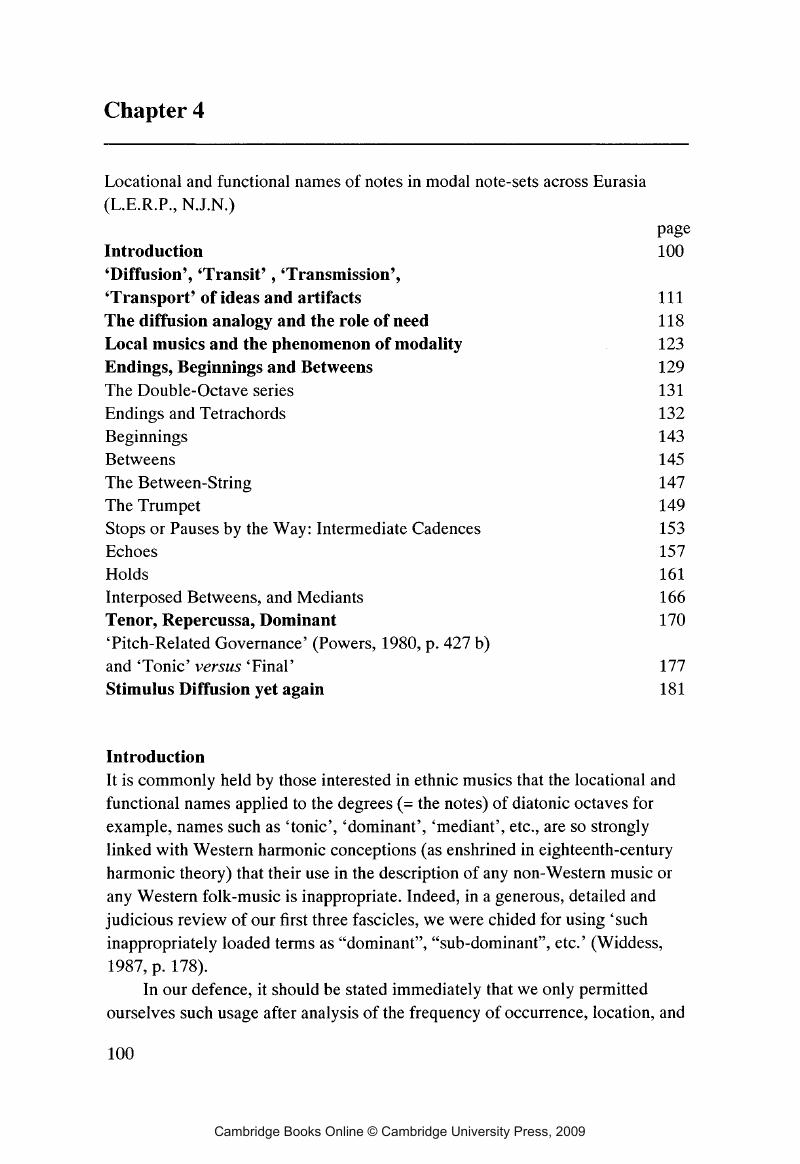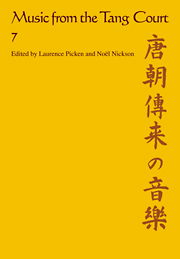Book contents
- Frontmatter
- Contents
- Preface
- Acknowledgements
- 1 How the Tōgaku Repertory was acquired by the Japanese; and the processes of ‘Acculturation’ that followed its acquisition.
- 2 In search of the music of pre-Nara Japan.
- 3 ‘Old Music’, ‘New Music’, and other classificatory terms in the musical vocabularies of Late Nara, and Heian, Japan.
- 4 Locational and functional names of notes in modal note-sets across Eurasia.
- 5 Modal note-sets and related matters
- 6 The Modal System of Tōgaku as a Vestige of the 28 Mode-Keys of the Tang Inheritance: Different Modes with Like Finals; Like Modes with Different Finals.
- 7 Parallels in the Organization of Music in Time in Indonesia, Ancient India and Ancient China.
- Envoi
- Cumulative bibliography
4 - Locational and functional names of notes in modal note-sets across Eurasia.
Published online by Cambridge University Press: 08 January 2010
- Frontmatter
- Contents
- Preface
- Acknowledgements
- 1 How the Tōgaku Repertory was acquired by the Japanese; and the processes of ‘Acculturation’ that followed its acquisition.
- 2 In search of the music of pre-Nara Japan.
- 3 ‘Old Music’, ‘New Music’, and other classificatory terms in the musical vocabularies of Late Nara, and Heian, Japan.
- 4 Locational and functional names of notes in modal note-sets across Eurasia.
- 5 Modal note-sets and related matters
- 6 The Modal System of Tōgaku as a Vestige of the 28 Mode-Keys of the Tang Inheritance: Different Modes with Like Finals; Like Modes with Different Finals.
- 7 Parallels in the Organization of Music in Time in Indonesia, Ancient India and Ancient China.
- Envoi
- Cumulative bibliography
Summary

- Type
- Chapter
- Information
- Music from the Tang CourtSome Ancient Connections Explored, pp. 100 - 184Publisher: Cambridge University PressPrint publication year: 2000

